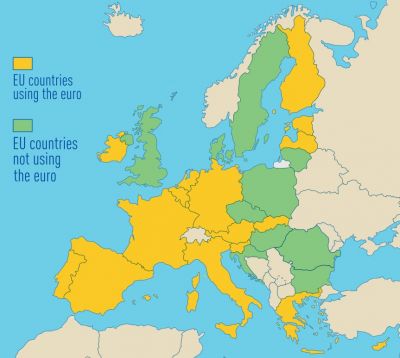Money

Euro
The euro is currently used by more than 60 % of EU citizens or
more than 334 million people in 18 EU countries.
The symbol of the euro is €. Euro notes are identical in all
countries but each country issues its own coins with one
common side and one side displaying a distinctive national
design. All the notes and coins can be used in all EU countries
that have adopted the euro, including many of their overseas
territories.
Andorra, Monaco, San Marino and Vatican City use the euro as
their national currency, in agreement with the EU. A number of
countries and territories, such as Kosovo and Montenegro, use
the euro as their de facto currency.
In European countries outside the euro area, many hotels, shops
and restaurants, particularly in tourist areas, accept payment
in euros as well as the national currency, although they are not
legally obliged to do so.
Cash and cards
Withdrawing euros from a cash machine anywhere in the EU
costs you the same as it does in your own country from a cash
machine that does not belong to your bank. The same fees must
apply to all payments by debit or credit cards in euros no matter
whether the transaction takes place in your own country or
within the EU. The same fees must also apply when making a
euro credit transfer or direct debit payment whether you send
a payment nationally or to another EU country. Charges for any
transactions may of course differ significantly between banks.
International payments in other currencies are not subject to
these provisions.
If you enter or leave the EU with €10 000 or more in cash (or
its equivalent in other currencies) you must declare it to the
customs authorities.